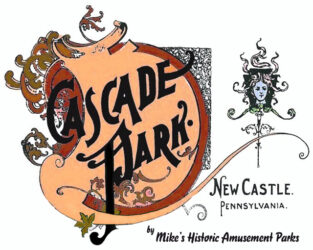
The Natural Spot

In the early days of Cascade Park, it was a largely wild and untouched place. A Boston landscape architect was hired to redesign the park’s layout with its pathways, steps, and buildings all situated in a way that complemented the topography and natural features. The park still utilizes this same layout.
At the park’s lowest elevation, the Big Run Creek was dammed to contain a new lake. For decades, boating, swimming and ice skating were offered and were the first glimpses of fun early visitors to the park witnessed as they rode the trolley along the length of the lake to the trolley depot.
By the 1950s, years of silt flowed through the Big Run and collected at the dam, causing the lake to become shallow to the point of disuse. Outcry from locals, with Paul Vesco being the effort’s biggest mouthpiece, resulted in the restoration and rededication of the lake.
By the late 1970s, the lake again filled with silt and became too shallow for Paul Vesco to operate his riverboat concession. Due to lack fo support from the city to correct the lake’s issues, Vesco raised the height of the dam. A few years later, the dam finally broke, letting what was left of the lake to completely run dry. The big run has reclaimed its course, along its natural cut through the lake bed.
Unsubstantiated rumors circulated in the mid 1990s that the lake would be again restored. Over the next several decades until present day, local politicians have poked at the idea of refreshing the lake.
The Big Run
The Big Run flows through Cascade Park over a series of rocks, falls, and cascades to the lowest point of the property with today’s visitors seeing many natural features the park’s earliest visitors saw. The Big Run’s most commonly fished species being Rainbow trout, Largemouth bass, and Smallmouth bass.
- The Upper Rock Cascades: This area is located on the Big Run Creek’s highest elevation in Cascade Park. A series of large rocks and boulders form the creek bed.
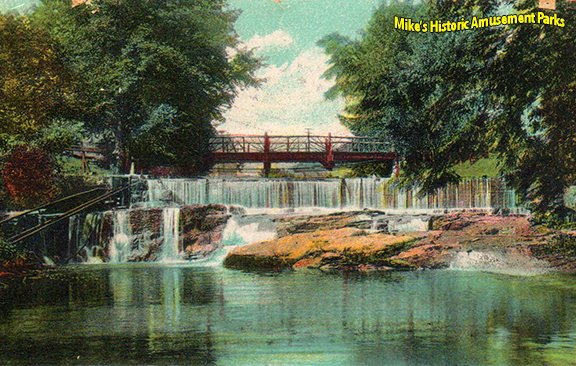
- The Dam (GONE): On top of the large rocks and boulders, a man made dam was present for many years. Remnants of the old dam are still visible if one looks close.

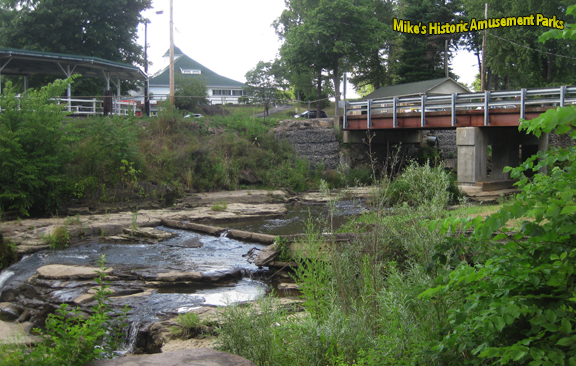
- Big Run Falls: Cascade Park’s most iconic and striking feature is the main waterfall that spills into a pool of water over a 22 foot tall ledge.
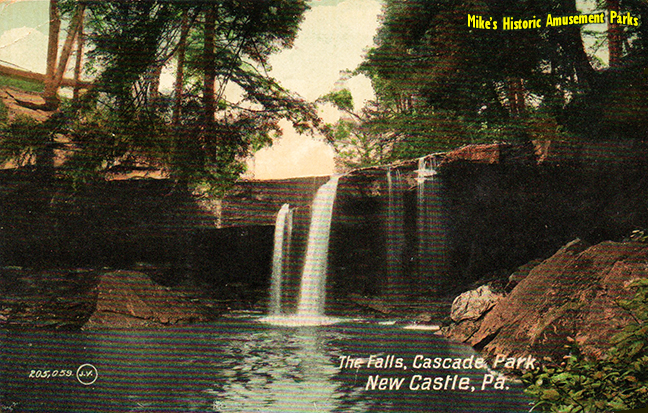
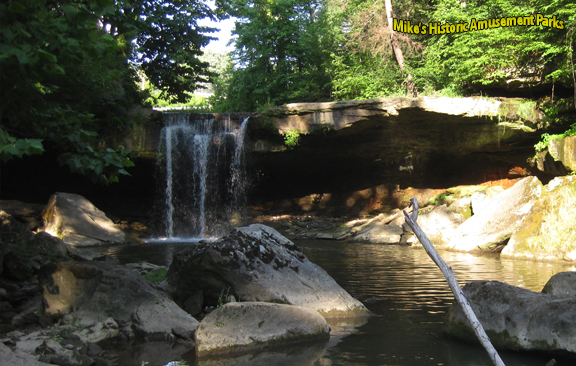
- The rocky creek bed: After the falls, a very rocky creek bed stretches from the base of the falls to an area just above the picnic grove when it becomes a gentle stream until reaching the lower cascades.
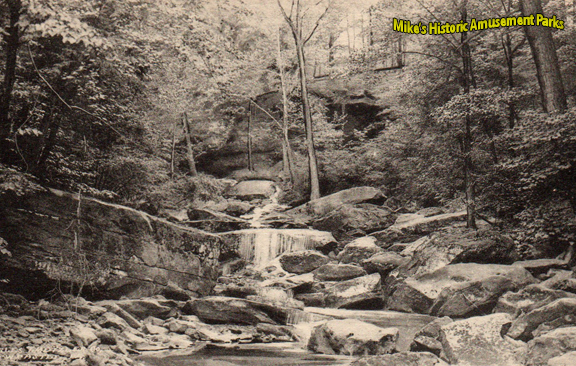
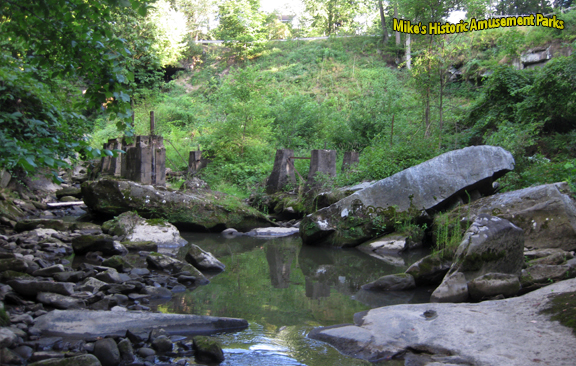
- The lower cacades: At the Big Run’s lowest elevation, a small series of gentle cascades are evident before making a sharp left turn to the area of the dried lakebed.
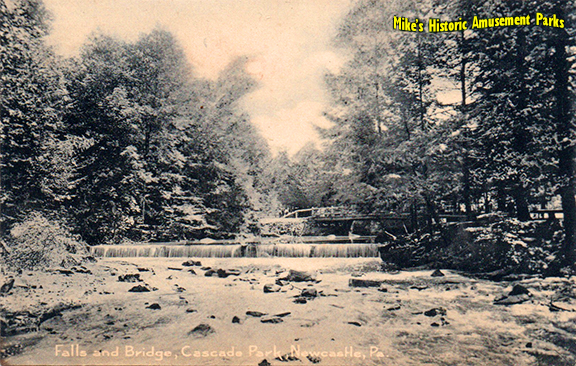
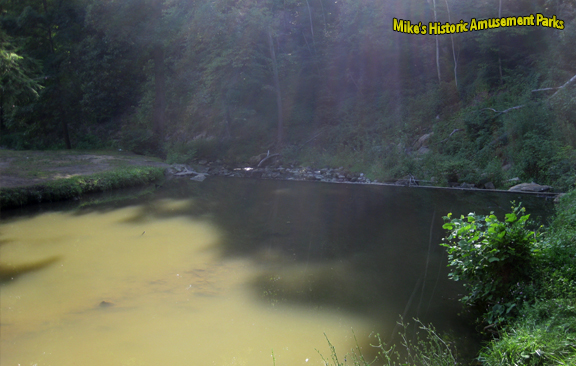
- The Lake (gone): A rather large clearing of land that held a lake from the park’s founding until the very early 1980s, now is the site of the Big Run’s most gentle stretch within Cascade Park. The old lake bed is now split in half by the Big Run Creek with the front half of the area being a grassy field and the back half being covered with growth and underbrush.
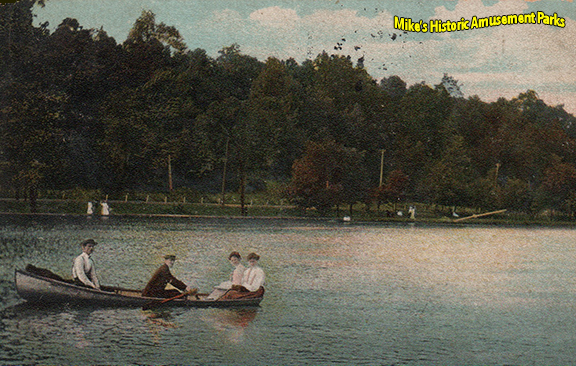
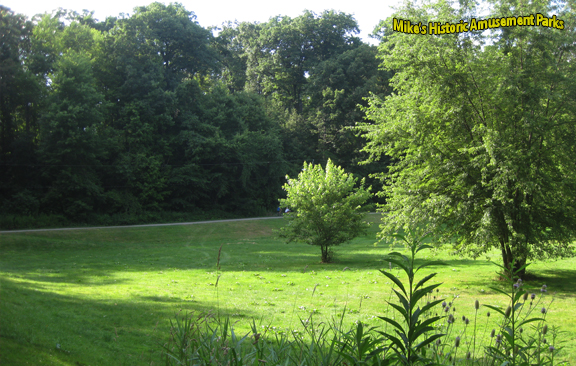
Rocks & Boulders
Cascade Park is filled with rocks and boulders that most visitors might miss if they are not looking for them. Some of the park’s man-made features utilized the rocks for the base of foundations and even as lookout spots. Here are some of the more prominent spots to find these massive boulders:
- Near the old Merry-Go-Round. The building, still standing was built right on top of some rocks. The base of those once helped form the back of the bleachers of the amphitheater. What looks like a concrete sidewalk is actually one massive boulder.

The Cat Rocks were once advertised as an attraction at Cascade Park. It’s no wonder, considering the scenic view they provided of the creek, lake, and the trolley depot.
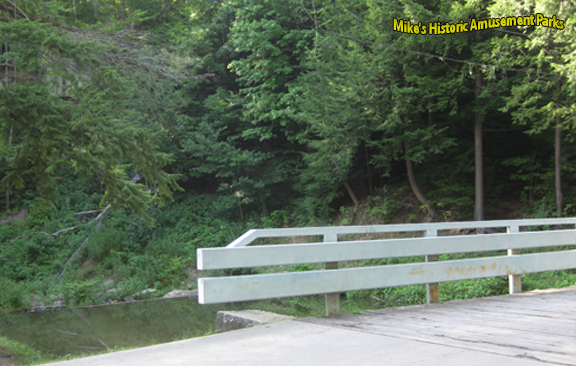
On the south bank of the Big Run creek there is a lookout that offers a scenic view of the falls. The whole area is covered in massive boulders.

The Swimming Pool bathhouse was built on the edge of some rocks that now bear scars of the building they supported for decades.

